What Was It Like When There Were No Stars In The Universe?
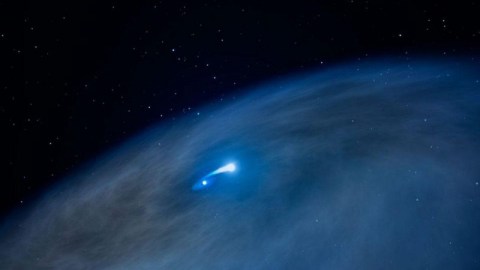
For perhaps 100 million years, there were no stars in the Universe. What was it like then?
The earliest stages of the Universe were extraordinarily eventful in bringing us about. Cosmic inflation happened and then ended, giving rise to the Big Bang. The Universe cooled and expanded from its hottest, densest stages to produce more matter than antimatter, and then stable protons, atomic nuclei, and eventually even neutral atoms, all amidst a sea of radiation and neutrinos.
By the time 500,000 years have gone by, the Universe is dominated by matter, the radiation sea is cool enough that atoms cannot become ionized, and gravitation gets to work in earnest. But it will take somewhere between 50 and 100 million years for even the very first star in the Universe to form. For all the time in between, the Universe truly experiences its dark ages. Here’s what it was like.
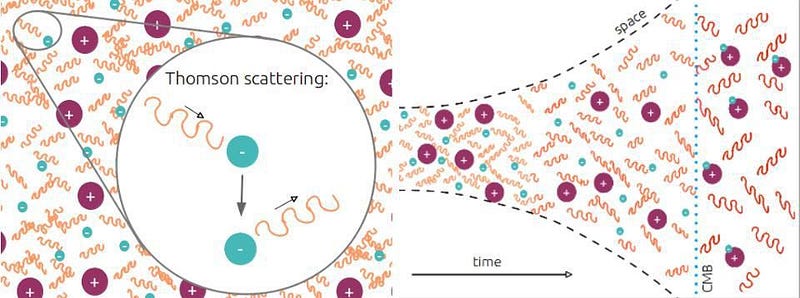
When neutral atoms first formed, that marks the time when photons stopped scattering off of free electrons, since free electrons are only present when your atoms are ionized in the form of a plasma. The radiation then simply travels in a straight line; with nothing to scatter off of, it simply moves at the speed of light.
This light comes from all directions and is almost perfectly uniform: it starts off at 2970.8 K, which would appear yellow-orange in color at that moment. But some regions are slightly hotter than others, reaching temperatures of around 2971.0 K, while others are slightly cooler, at around 2970.6 K. This might not seem like much, but it’s the most important factor in how our Universe will evolve and grow from here.
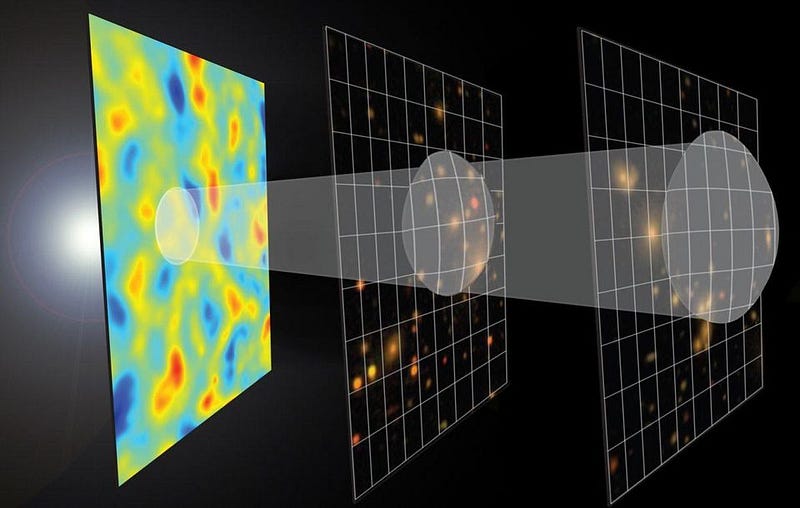
The reason is because all of the radiation is actually the exact same temperature to start with, but the environment it lives in can vary slightly from location to location. Some regions have exactly the average density that the overall Universe does, but other regions have slightly more (or less) matter than average.
The underdense regions, since they have less matter in them, have less gravity in them. When a photon travels out of that region, it has a smaller gravitational potential to fight against, meaning it loses less energy due to gravitational redshift, becoming hotter than average.
On the other hand, the overdense regions have more matter in them, and therefore, they have more gravity to fight against. As the photons climb out, they lose more energy than average, and therefore become colder, or less energetic, overall.
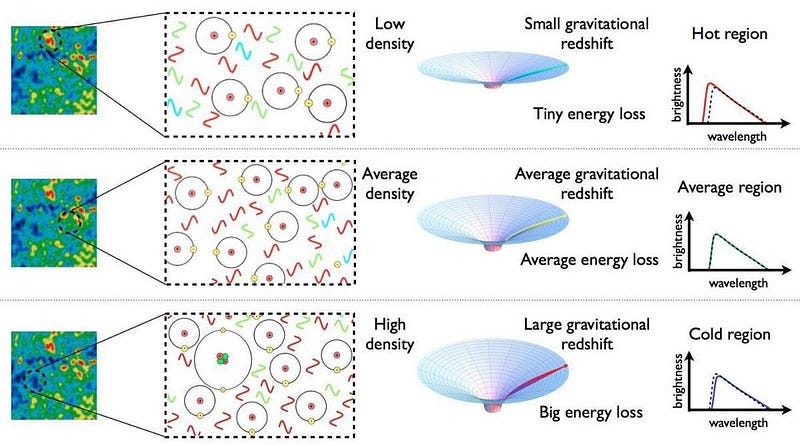
You might think, therefore, that all that’s left to do is for these overdense regions to clump together and attract more and more matter, as gravity dictates, until we form stars. But that’s not all that’s at play. The photons, as a part of the Universe, have a little more to add to the story before they simply fade into the cosmic background.
The way gravity works is just like you think: all the masses attract one another, and wherever you have the most mass, it preferentially pulls in all the other mass around it. Even in the expanding Universe, these overdense regions attract mass from any nearby region that’s less dense, particularly from the underdense regions, which can only tenuously hold onto their matter, at best.
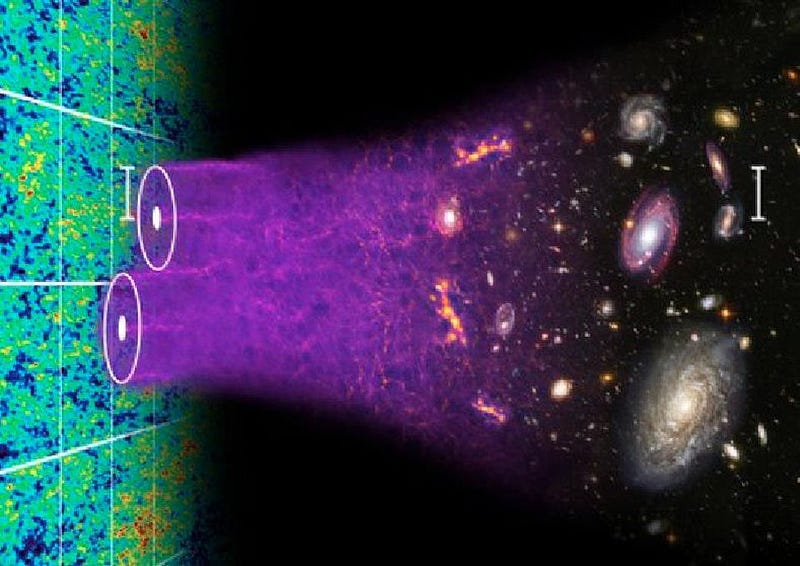
Gravitation, in this sense, is a runaway force. The more matter gets attracted to a region, the more successful gravity is at bringing additional matter into it. But as true as this is, matter and gravity aren’t the only things going on at this time. There’s also radiation, in the form of these photons. And while matter — both dark matter and atomic matter — gravitationally attracts massive particles, it also draws radiation into the most overdense regions.
And radiation, unlike matter, has pressure. The same pressure that holds a star like our Sun up against gravitational collapse also can hold up these collapsing gas clouds, and slow the rate that they grow. Even in a matter-dominated Universe, so long as radiation is still important, the matter overdensities can only grow slowly.
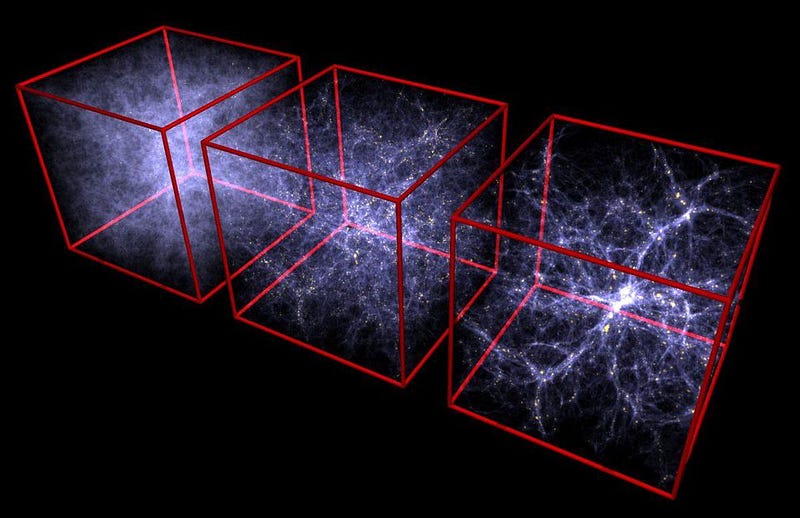
For millions of years, the rate of growth is severely limited. But during the earliest stages, since we’ve formed neutral atoms out of (mostly) protons and electrons, there’s a new form of light that gets emitted: the light from a flipping hydrogen atom.
Hydrogen atoms are made out of one proton and one electron, and each one of them has an intrinsic spin: either +½ or -½. There is a slight difference in the overall energy between a system where the proton and electron have the same spin (either +½, +½ or -½, -½), making it slightly higher-in-energy than where they have opposite spins (either +½, -½ or -½, +½). On timescales of around 10 million years, the configurations where they have the same spin will spontaneously flip, emitting a photon of a specific wavelength, 21 cm, when that happens.
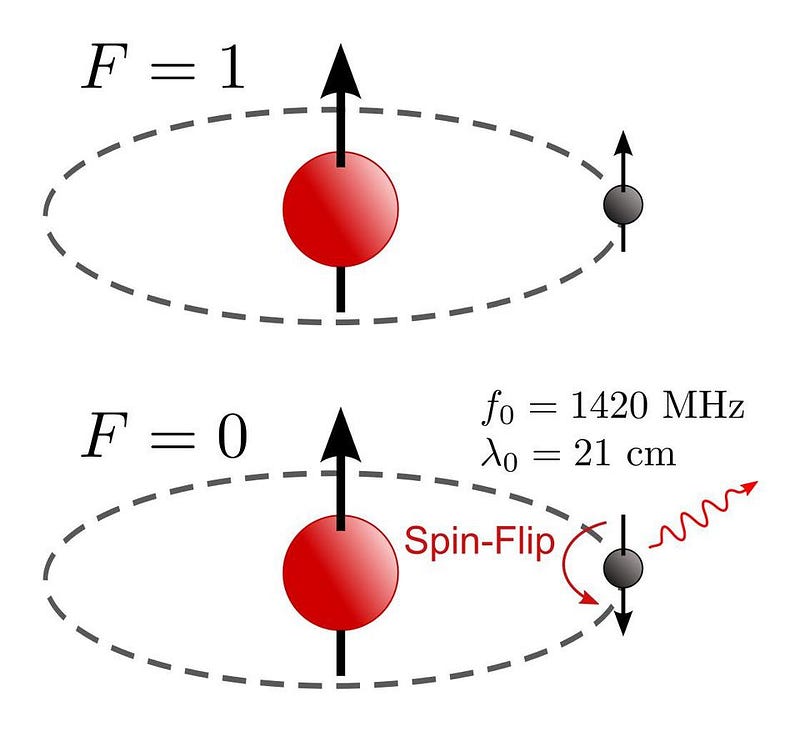
Although the Cosmic Microwave Background radiation comes from the aftermath of the Big Bang itself, there is this weak, tiny signal emerging on top of that: the 21 cm emission from approximately 46% (by number) of all the atoms in the Universe. Every hydrogen atom that spontaneously forms in a state where the protons and electrons are aligned will emit light in this fashion, and will do so every time new hydrogen atoms are made.
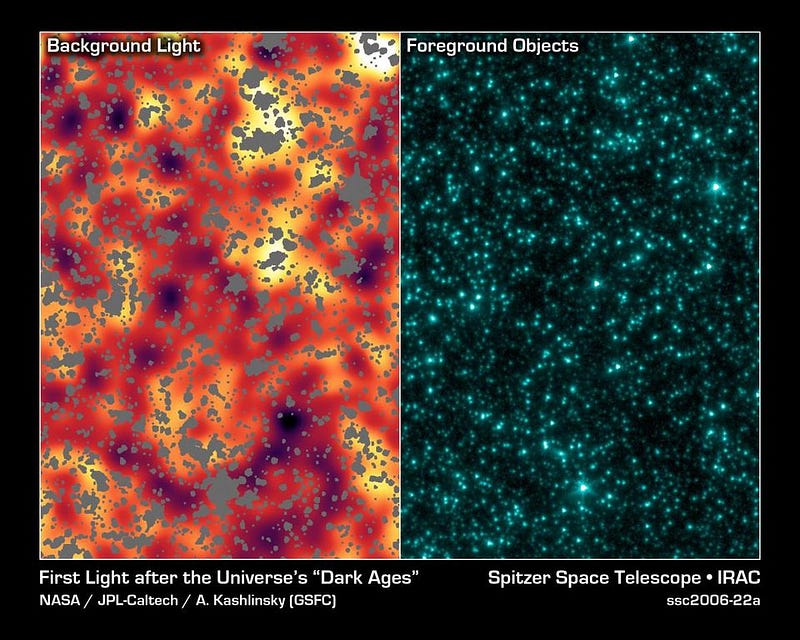
But there are other processes happening simultaneously that will be even more important for this matter giving rise to the Universe we know. We’ve got a long way to go from the moment we form neutral atoms, and we need the help of photons redshifting and gravitation pulling matter into the overdense clumps to make it happen.
Over the first 3 million years, the temperature cools from ~3000 K to 800 K, taking the radiation from yellow-orange to orange to red colors, where it finally cools enough to become invisible to human eyes. The falling radiation pressure allows matter clumps to grow, but only to about four times the magnitude that they were when the CMB was emitted.
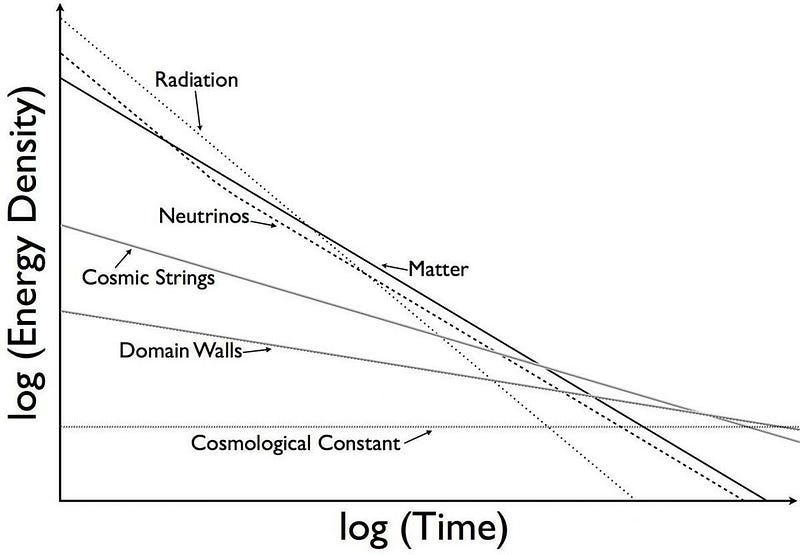
By time the Universe is between 15 and 20 million years old, it’s cooled to around the temperatures we experience here on Earth: empty space is about room temperature. The matter clumps that were just a little bit denser than average (maybe 1-part-in-30,000) are now approximately 10–15 parts in 30,000 as dense as average. The densest clumps have started to grow somewhat more rapidly, and may be up to 60-to-90 parts in 30,000 denser than average: about 0.2% or 0.3% overdense.

There’s a critical density, you see, that matter can reach. Up to that point, the overdense regions grow as though they follow a straightforward law: when the Universe is half the temperature, the matter clumps grow to double their original overdensity. But when you pass a certain, critical threshold, the clumps start growing much more quickly. Once you’re 68% denser than average, runaway collapse is inevitable.
At around 50 million years of age, the densest clumps have now transitioned into this post-critical phase, and start contracting at an extremely accelerated rate.
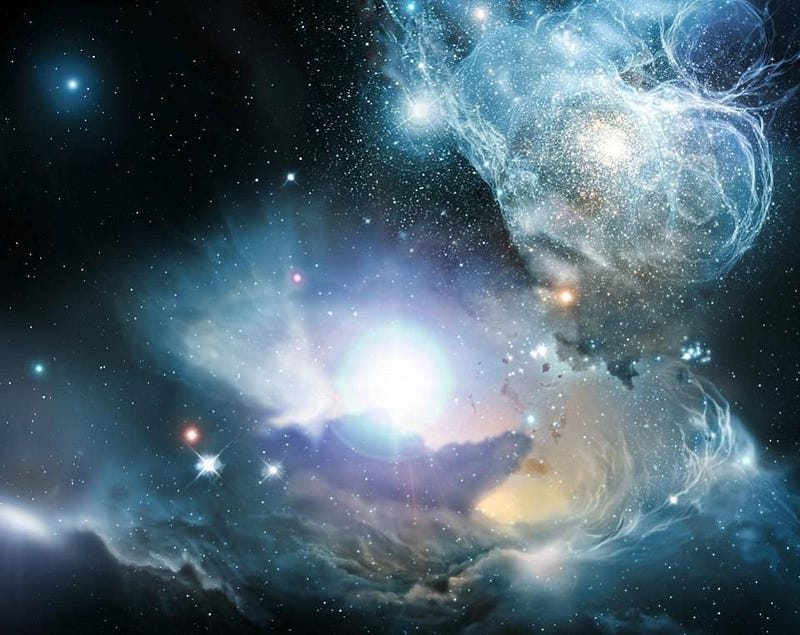
Although the first big waves of star formation, on large scales, won’t begin until the Universe is around 200–250 million years old, the very densest regions will see the matter within them collapse down to large densities in just 50-to-100 million years. At some point, due to cooling, the very first star — defined by the first hydrogen-into-helium chain reaction via proton-proton fusion — will occur. In a Universe filled with dark matter and normal matter, the Universe must cool to somewhere around 100 K before the first true star can actually form.
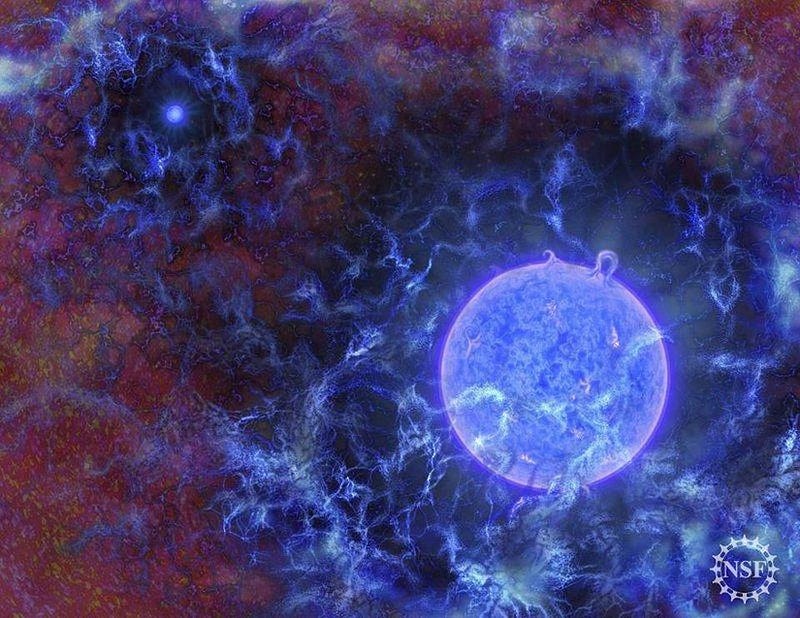
This is about 30-to-50 times hotter than the background temperature of empty space today, and will occur farther back in time and space than even the James Webb Space Telescope will be able to observe. In the coming decade, we’ll be able to directly view that first major waves of star formation, but not the very first stars of all, that serendipitously occur even earlier.
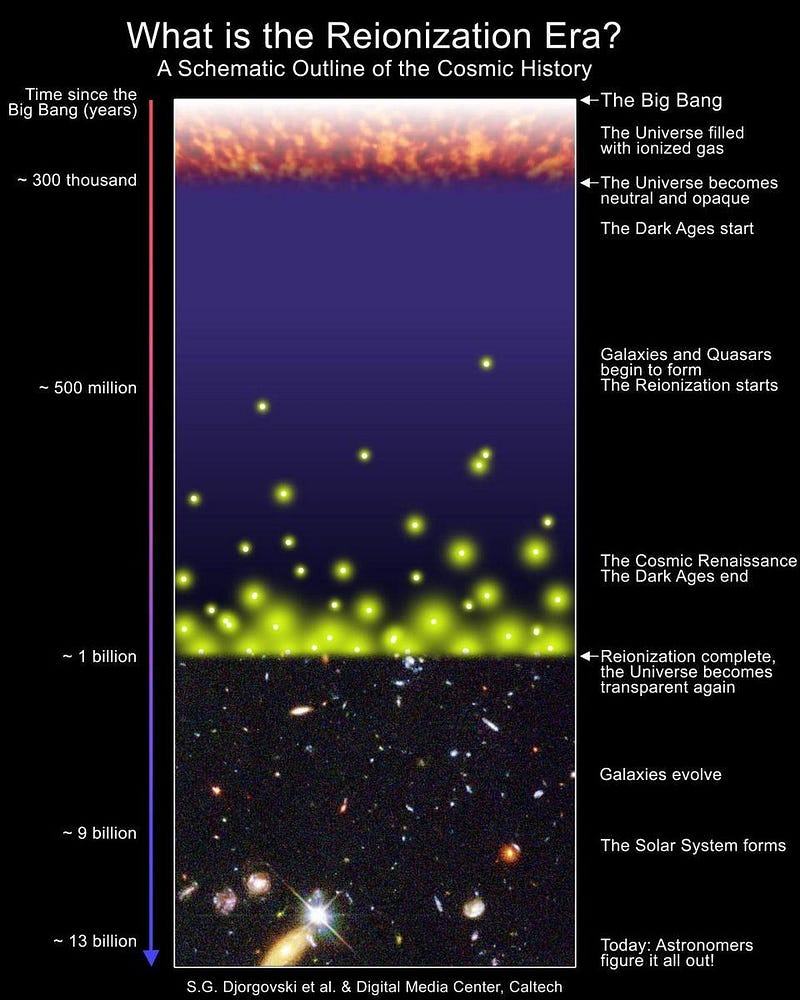
It takes just half a million years to take all the normal matter in the Universe and have it be completely neutral, but 100-to-200 times as long before that neutral matter can collapse down enough to form the very first star in the Universe. Until that happens, the only light to see will be the leftover glow from the Big Bang, which falls to low enough energies to make it invisible after just 3 million years. For 47-to-97 million years, the entire Universe is truly dark. But as the first star ignites, “let there be light” is finally, once again, a part of our cosmic history.
Further reading on what the Universe was like when:
- What was it like when the Universe was inflating?
- What was it like when the Big Bang first began?
- What was it like when the Universe was at its hottest?
- What was it like when the Universe first created more matter than antimatter?
- What was it like when the Higgs gave mass to the Universe?
- What was it like when we first made protons and neutrons?
- What was it like when we lost the last of our antimatter?
- What was it like when the Universe made its first elements?
- What was it like when the Universe first made atoms?





